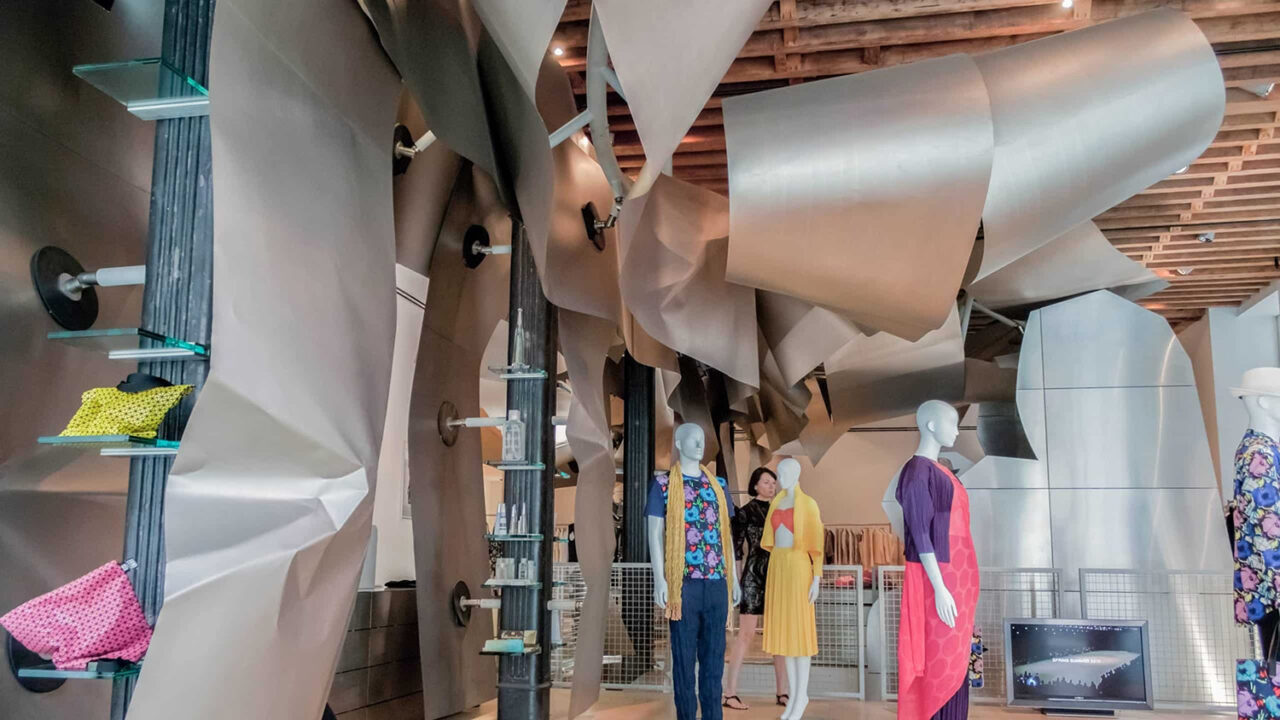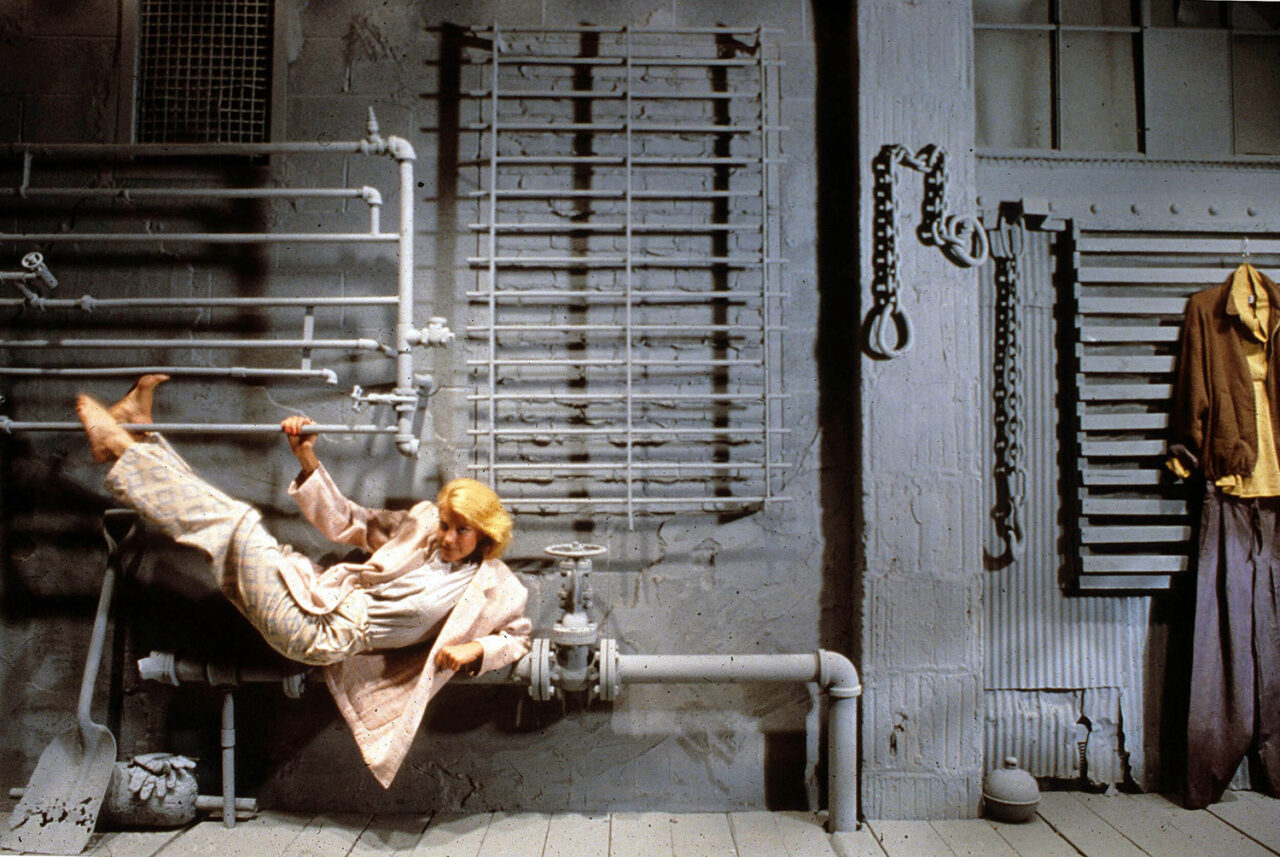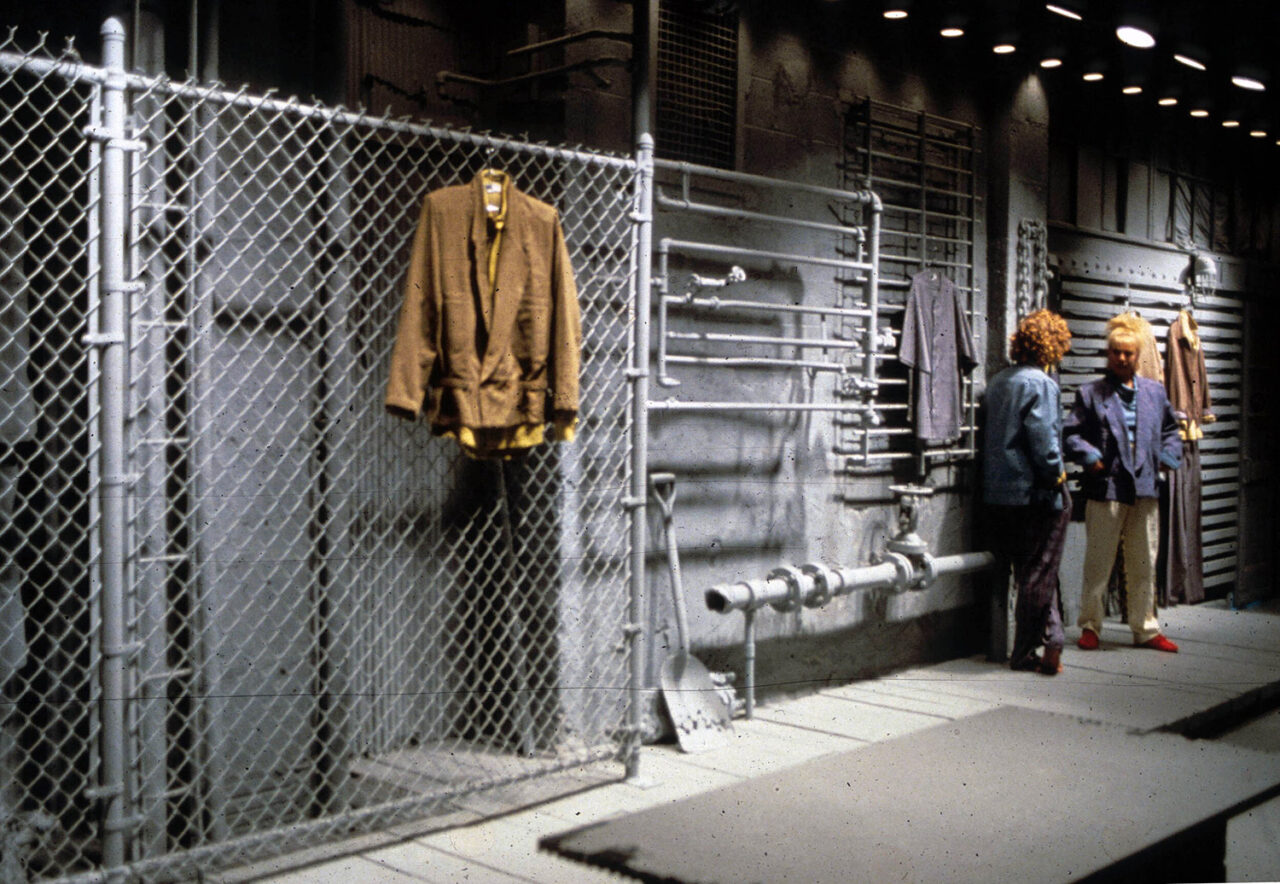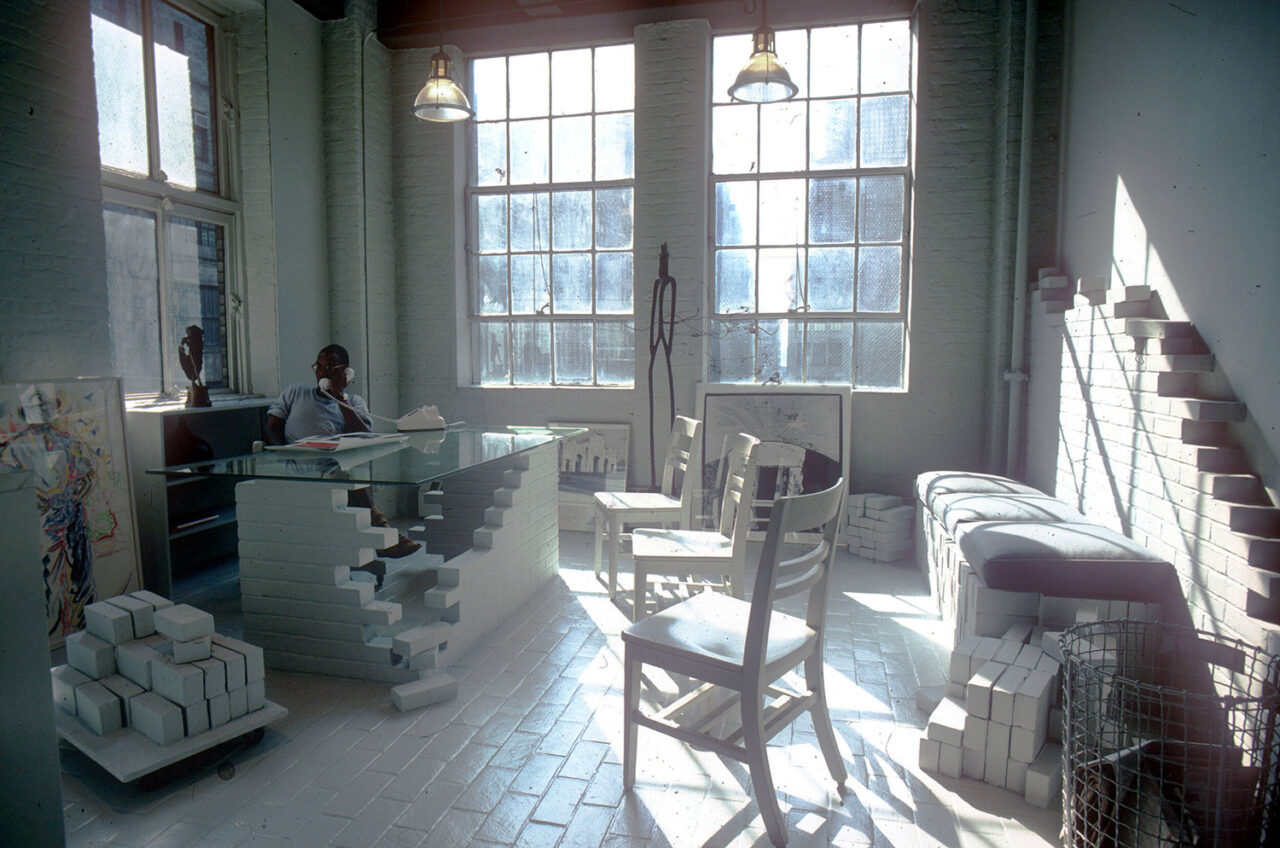by Andi Soos
On Wednesday, 2/21, 6–8pm, the Center for Architecture will welcome Andi Soos, independent curator, and Avery Trufelman, podcast host and radio producer, for a discussion about the mediums of fashion and architecture and the parallels of creating spaces and clothing—register here! Below, Soos offers a short preview of the discussion!
Broken windows, industrial areas, and the concrete sidewalks of New York were all things that inspired Willi Smith, the first Black fashion designer who achieved remarkable success with his brand WilliWear in the early 1980s. By selling high quality, affordable garments, Smith aimed to make streetwear accessible, and he wanted his showroom to reflect this idea—that fashion is part of the cityscape and, therefore, our everyday life.
In a quest to find the right architect for his new Garment District boutique, Smith and his business partner, Laurie Mallet, noticed the unique Rizzoli Bookstore on 5th Avenue. The books were displayed on a construction site, with an unfinished brick wall as a reception desk. The architecture, in many ways different from the aesthetic of retail in Manhattan at the time, was created by environmental art studio SITE, founded by James Wines and his partners. The run-down atmosphere was exactly what Smith envisioned for his showroom. The two decided to explore areas of the city they were mutually inspired by, exploring everything from texture and material arrangements to the interiors of Chelsea’s gay bars. SITE literally brought the city into Smith’s showroom by using materials found on the streets: fences, bars, and pipes became design elements that served also as clothing racks. The factory-like space, with walls painted gray, was illuminated by Smith’s outfits. The WilliWear boutique went on to host fashion shows and other events that drew celebrities, and the interiors went on to inspire similar retail design in the following years.
This partnership wasn’t Wines’ only connection to fashion. Originally trained as a sculptor, he designed limited edition sweaters, sunglasses, and watches with SITE in the 1990s. He had also collaborated with the late fashion designer Virgil Abloh. I came across further, perhaps lesser-known proof of his interest in fashion at the MoMA Library. In Wines’ artist file, there was an invitation to a 1990 exhibition at the Chrysler Museum in Norfolk, Virginia. The card featured a futuristic silver-and-red outfit titled the “UFO Costume by Wines.” The space race and Cold War era references of the piece made me think about how the UFO costume landed on Earth. During this research, I discovered further links between the built environment, fashion, and art. Our talk with Avery Trufelman will explore these intersections, from the Tribeca store of Issey Miyake by Frank Gehry and Gordon Kipping to the opulent fashion and window display performances by artist Colette.
Register for the talk with Soos and Trufelman on Wednesday, 2/21, 6–8pm, here.



